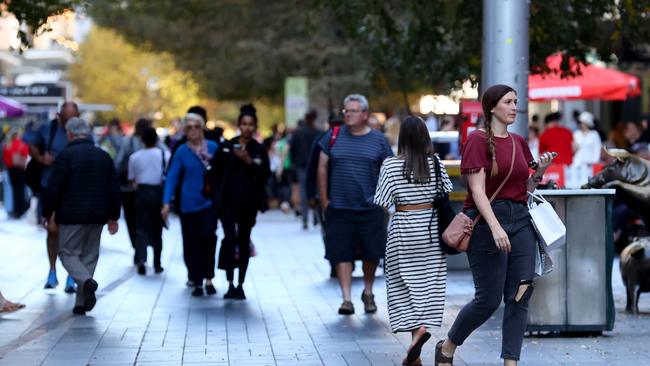Inflation progress stalls prompting traders to slash rate cut bets
Amid concerns that simmering price pressures will delay much needed interest rate cuts, price pressures intensified in April to 3.6 per cent.
Business Breaking News
Don't miss out on the headlines from Business Breaking News. Followed categories will be added to My News.
Australia’s progress in curbing inflation may have ground to a halt, economists have warned, compounding the challenge the Reserve Bank faces in taming simmering price pressure and delivering interest rate relief to cash strapped borrowers.
The monthly consumer price index climbed to 3.6 per cent in the 12 months to April, the Australian Bureau of Statistics said on Wednesday, outpacing an expected increase of 3.4 per cent.
Trimmed mean inflation – the RBA’s preferred measure of underlying price pressures which strips out volatile items like petrol – also ticked up to 4.1 per cent.
Responding to the hotter-than-expected figures, traders slashed their rate cut bets, pushing out an expected easing of interest rates until November 2025. Previously a 25 basis point cut had been priced in for May next year.
The sharemarket fell sharply, with the S&P/ASX200 recording its worst intraday decline in more than a month.
“The disinflationary process in Australia appears to have stalled out so far this year after encouraging declines over 2023,” Betashares chief economist David Bassanese said.
“The upshot of today’s inflation result is that interest rates are likely to remain at current restrictive levels for an extended period – with little relief likely this side of Christmas.”
With inflation picking up further, Capital Economics’ Marcel Thieliant said he didn’t expect the RBA to cut rates before 2025.
“Stalling disinflation means rates will remain higher for longer,” Mr Thieliant said.
By itself, Wednesday’s result won’t change the timing of if and when the RBA can start to lower interest rates, which affect variable mortgages and other loans.
However, given the minimal progress on inflation since December, the reading also stoked fears that the RBA could deliver another rate hike, which governor Michele Bullock has not ruled out.
“There is a higher chance that the cash rate will be increased in the second half of 2024 than of it being cut,” HSBC chief economist Paul Bloxham said.
Downplaying the result, Treasurer Jim Chalmers said the monthly reading was “volatile” and pointed to the budget’s focus on cost of living relief.
But shadow treasurer Angus Taylor maintained that Australians’ standard of living had “collapsed”, with the decline fuelled by excessive spending by Labor.
Rents, petrol, fruit and veg fuel inflation rebound
Among the most significant contributors to the increase, were housing costs. Rents jumped 7.5 per cent as vacancy rates held at near-record lows, while the cost of home building also remained elevated, up 4.9 per cent.
Food and vegetable prices recorded their strongest annual increase since April 2023, up 3.5 per cent, with unfavourable weather conditions driving price hikes on everything from berries to broccoli, the ABS said.
Similarly, petrol prices rose 7.4 per cent higher as motorists were slugged at the bowser.
After health insurers delivered an average annual premium increase of 3 per cent – the highest in five years – health inflation jumped by 6.1 per cent.

Electricity prices also rose by 4.2 per cent in the 12 months to April, however, had it not been for existing power bill subsidies, prices would have soared by 13.9 per cent over the same period.
Having peaked at 8.4 per cent in December 2022, inflation steadily retreated in the following 12 months but has since stalled, demonstrating the difficulty the RBA, like other central banks, has in achieving the last mile of its fight to return inflation to its 2 to 3 per cent target band.
It is expected that the $300 household power bill rebate unveiled in the May budget to lop half a percentage point off measured headline inflation, however economists have cautioned that the saving could fuel spending elsewhere in the economy, further exacerbating inflationary pressures.
April’s monthly read is the final piece of inflation data the RBA will receive before its next interest rate decision, scheduled for May 19, where it is widely expected to keep the cash rate on hold at 4.35 per cent.
Originally published as Inflation progress stalls prompting traders to slash rate cut bets


